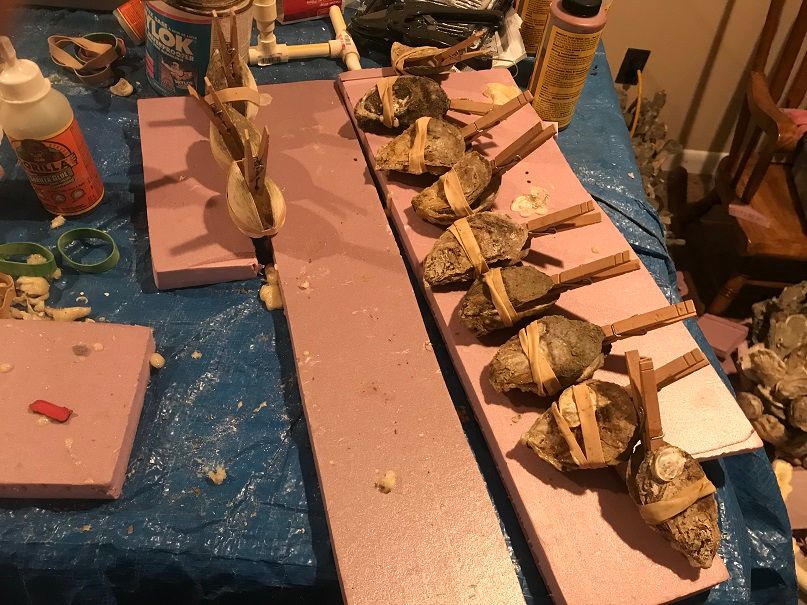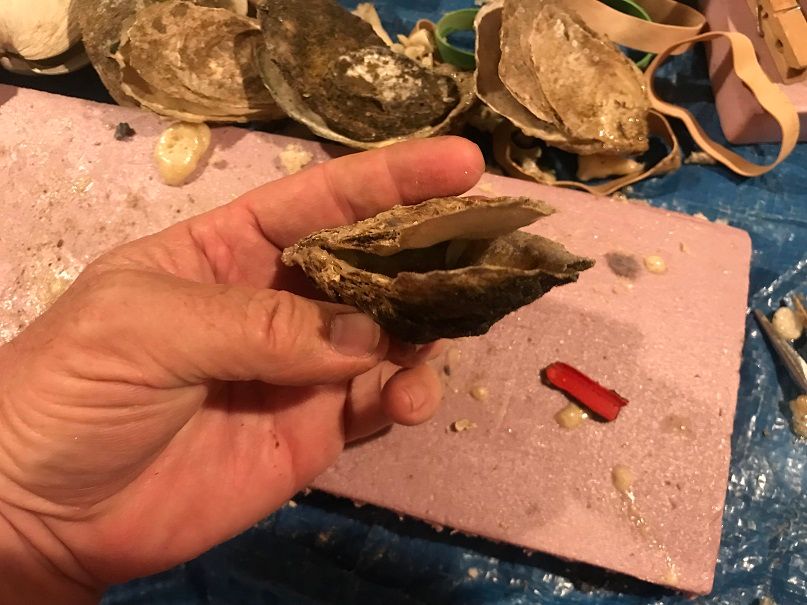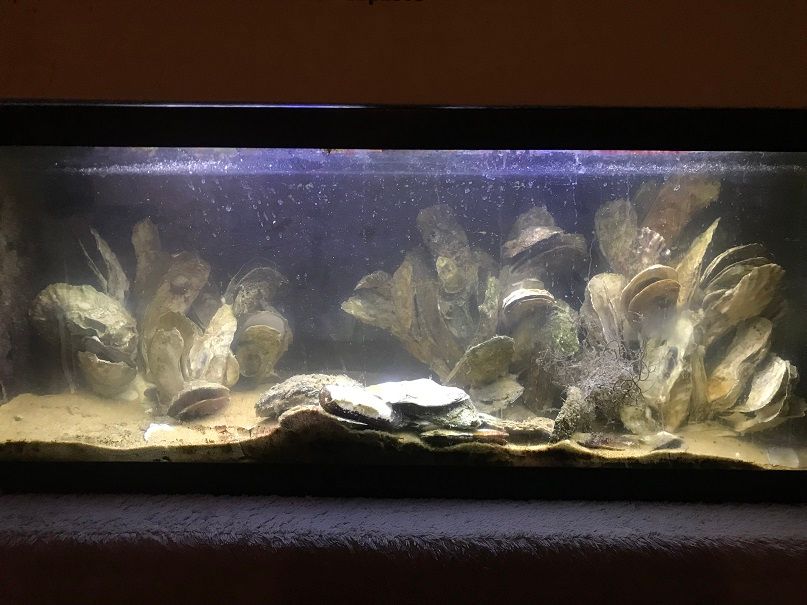Last night, I removed the remaining complete oyster and clam shells, and the PVC pipe. I'll glue the compete shells and place them strategically into the tank tonight to provide additional hiding spots. Once I build the larger reef, I'll wind up gluing these to the other sections of the reef that are currently not in a tank. I placed the improved structure with the repaired overhangs in the tank, and I'm really happy with how it turned out.
I moved the remaining shells in the tank that were halves or pieces to the front of the tank until I decide what to do with them. I will keep the ones in there that have good "life" on them. I may or may not keep the others. What I've learned is that eventually, some of the shells, even complete oyster shells, will be buried in the sand. Current and critters cause this. I have no idea what happened to the mud crabs in the tank. They may still be in there, but I haven't seen them. They could have been in the reef when I removed it for repair, but, I never saw any sign of them climbing out. I might find one on the floor in the rec room some day, LOL.
Anyway, below is a pic of the remaining shells that I glued lat night. I use a clothes pin to create a 1/2" gap. There was a journal written about the gap preferences of striped blennies (and other benthic fish) for breeding purposes, and their findings showed that 1/2" was the optimal gap. I glued the inside base of the shell with Gorilla Glue, placed the pin in the front of the shell, and used rubber bands to bind them until the glue dried. The clams need less glue, because the joint is stronger than oysters. I used the clothes pin for them too. The clingfish prefer the clams, it seems, but that may be because the blennies prefer and use up the oyster shells. In truth, when hiding, they all use anything available. Here are my gluing efforts, and results:



The tank was too cloudy last night because of the work that I did removing everything, so I couldn't take a pic. I cleaned out the filter and put in a new pad. Hopefully, the filter will keep working. Last night I found it had stopped. I cleaned it out again and the impeller was stuck, so I freed it. Although it's noisy, it was working after the repair and cleaning.
I took a pic this morning after the filter did some work. I don't have an FTS before the repairs (with the overhangs collapsed), but here's a video where you can see it in the first 30 sections. After that, the pic shows it all repaired:

I moved the remaining shells in the tank that were halves or pieces to the front of the tank until I decide what to do with them. I will keep the ones in there that have good "life" on them. I may or may not keep the others. What I've learned is that eventually, some of the shells, even complete oyster shells, will be buried in the sand. Current and critters cause this. I have no idea what happened to the mud crabs in the tank. They may still be in there, but I haven't seen them. They could have been in the reef when I removed it for repair, but, I never saw any sign of them climbing out. I might find one on the floor in the rec room some day, LOL.
Anyway, below is a pic of the remaining shells that I glued lat night. I use a clothes pin to create a 1/2" gap. There was a journal written about the gap preferences of striped blennies (and other benthic fish) for breeding purposes, and their findings showed that 1/2" was the optimal gap. I glued the inside base of the shell with Gorilla Glue, placed the pin in the front of the shell, and used rubber bands to bind them until the glue dried. The clams need less glue, because the joint is stronger than oysters. I used the clothes pin for them too. The clingfish prefer the clams, it seems, but that may be because the blennies prefer and use up the oyster shells. In truth, when hiding, they all use anything available. Here are my gluing efforts, and results:



The tank was too cloudy last night because of the work that I did removing everything, so I couldn't take a pic. I cleaned out the filter and put in a new pad. Hopefully, the filter will keep working. Last night I found it had stopped. I cleaned it out again and the impeller was stuck, so I freed it. Although it's noisy, it was working after the repair and cleaning.
I took a pic this morning after the filter did some work. I don't have an FTS before the repairs (with the overhangs collapsed), but here's a video where you can see it in the first 30 sections. After that, the pic shows it all repaired:





